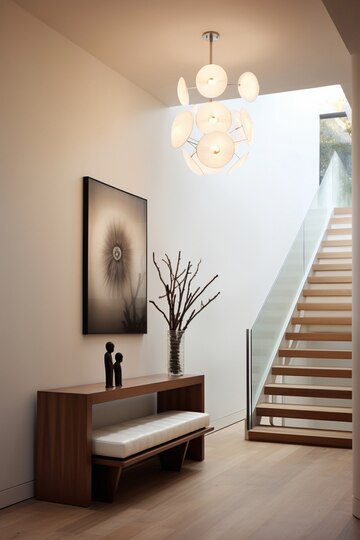Stairwells often serve as the unsung heroes of a building’s infrastructure, quietly facilitating movement from one floor to another. While staircases are primarily functional elements, their design and lighting play a crucial role in ensuring safety, aesthetics, and energy efficiency within a building. In this comprehensive guide, we delve into the realm of stairwell lighting, exploring its significance, principles, and best practices.
Importance of Stairwell Lighting
Enhancing Safety
Stairwells are inherently hazardous areas due to changes in elevation and potential trip hazards. Adequate lighting is paramount to mitigate these risks and prevent accidents, especially in emergency situations. Proper illumination ensures that steps, handrails, and landings are clearly visible, reducing the likelihood of slips, trips, and falls.
Compliance with Building Codes and Standards
Building codes and standards mandate specific lighting requirements for stairwells to ensure occupant safety. Understanding these regulations is essential for architects, designers, and building owners to ensure compliance and avoid legal liabilities.
Creating Visual Interest and Ambiance
Beyond safety considerations, stairwell lighting contributes significantly to the overall aesthetic appeal of a building. Thoughtfully designed lighting schemes can transform mundane staircases into visually captivating architectural features, enhancing the building’s ambiance and elevating the user experience.
Promoting Energy Efficiency
Efficient stairwell lighting not only enhances safety and aesthetics but also promotes energy conservation. By incorporating energy-efficient lighting fixtures, sensors, and controls, building owners can reduce energy consumption and operating costs while minimizing environmental impact.
Principles of Effective Stairwell Lighting
Uniformity and Glare Control
Achieving uniform illumination throughout the stairwell is essential to ensure consistent visibility and minimize contrast between light and dark areas. Glare control is equally important to prevent discomfort and visual impairment, especially in areas with reflective surfaces.
Appropriate Fixture Selection
Selecting the right lighting fixtures is crucial to meet the unique requirements of stairwells. Factors such as fixture type, color temperature, and light distribution must be carefully considered to achieve optimal visibility and ambiance.
Integration with Architectural Design
Stairwell lighting should seamlessly integrate with the architectural design of the building, enhancing its aesthetic appeal while maintaining functionality. Collaboration between architects, lighting designers, and interior designers is essential to achieve cohesive and visually pleasing lighting solutions.
Emergency Lighting Provisions
Incorporating emergency lighting provisions is critical to ensure continued visibility and safe egress during power outages or other emergencies. Backup power sources, such as generators or battery-powered luminaires, should be integrated into the lighting design to meet regulatory requirements and safeguard occupants.
Best Practices in Stairwell Lighting Design
Utilizing LED Technology
LED lighting technology has revolutionized stairwell lighting design, offering unparalleled energy efficiency, longevity, and versatility. LED fixtures provide uniform illumination, precise control, and customizable color temperatures, making them ideal for enhancing safety and ambiance in stairwells.
Implementing Motion Sensors and Timers
Motion sensors and timers can significantly enhance energy efficiency by activating lighting fixtures only when needed. Incorporating these smart controls in stairwell lighting systems helps reduce unnecessary energy consumption while ensuring adequate illumination when occupants are present.
Optimizing Light Levels and Distribution
Careful consideration should be given to the selection and placement of lighting fixtures to achieve optimal light levels and distribution throughout the stairwell. Balancing ambient, task, and accent lighting effectively enhances visibility, minimizes shadows, and accentuates architectural features.
Enhancing Visibility with Contrast and Color Rendering
Contrast and color rendering play vital roles in enhancing visibility and perception in stairwells. Selecting lighting fixtures with high color rendering indices (CRI) and appropriate color temperatures improves color fidelity and contrast, resulting in clearer visibility and reduced eyestrain.
Conclusion
Stairwell lighting serves as a critical component of building design, balancing functionality, safety, and aesthetics. By adhering to best practices and principles of effective lighting design, architects, designers, and building owners can create visually stunning and safe stairwells that enhance occupant experience while promoting energy efficiency and compliance with regulatory standards. Investing in thoughtful stairwell lighting solutions not only illuminates the path but also illuminates the architectural beauty of the built environment.







